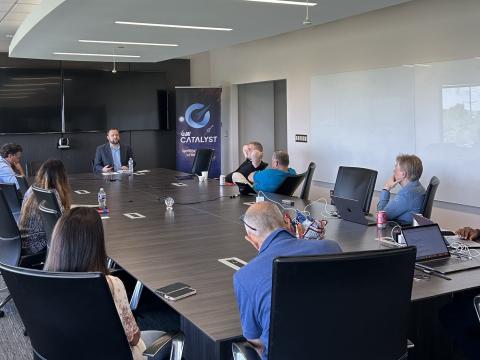Guest Blog: Cyber Trading Posts Ignite the Spark in Public-Private Collaboration
Partnerships are growing from disparate groups in search of the same goal.
Innovation comes in many forms. From gradual evolution or through disruptive processes; as a result of revolutionary thinking or from a confluence of ideas from different entities that share a common goal. Today, we’re seeing more and more innovation blossoming from partnerships among seemingly disparate groups all looking for similar outcomes, whether they concern peace, productivity or profit.
In the area of cybersecurity, there’s now a virtual trade route—a new trading post that spans the technological advances of Silicon Valley, the financial markets of Wall Street and the federal agencies of the Washington, D.C., beltway. This public-private exchange of commerce and intellectual property is responsible for driving innovation across many markets while ensuring key services remain online—regardless of whether those services take the form of a global etailer, an investment bank or a federal agency.
Despite the tremendous development in cybersecurity tools during the past decade, the escalating frequency and complexity of attacks makes real-time security management more complicated and challenging. But nowhere is the gap between risk mitigation and attack sophistication more significant than in the nation’s critical infrastructure, where cyberthreats can be targeted at the fabric of our most critical assets. Federal agencies and their trusted partners need new ways to win the cybersecurity arms race. Global financial institutions and industry leaders quickly are discovering the value of more rigorous and integrated cyberdefenses.
The B2B2G Cyber Ecosystem: Redefining a New Level of Collaboration
While government sometimes is called out for having long, drawn-out procurement processes, it also tends to offer longer-term contracts that can support leapfrog innovation. On the other hand, the private sector can make for extremely forward-looking technology partners—especially when there is great need or opportunity. Yet many companies are confined to annual fiscal planning and inflexible budgets, which can make multiyear research and development challenging. Start-up companies can operate under fewer constraints but might lack the ability to grow quickly or scale.
Like any enterprise, our nation is trying to get a handle on today’s explosive trends, such as cybersecurity, cloud, mobile, social and the “Internet of Things.” These areas of high growth continue to feed the “cyber beast” in terms of the need for more innovation, increased investment and market expansion. The goal is to promote what we call a B2B2G ecosystem of dedicated security business professionals. (B2B2G is business-to-government and enterprises teaming with contractors and subcontractors on products and services). Such an ecosystem allows the coming together of great ideas, funding and people—or minds, wallets and hands—to create and support new security approaches.
Stronger public-private collaboration quickly is moving from mere talk to broad-based coordinated action. We’re now seeing everything from the sharing of actionable intelligence and requirements to hackathons and investment summits, from robust technology bake-offs to joint cyber readiness exercises and preparedness competitions. While these types of activities occur piecemeal around the world, Silicon Valley, New York City and the Washington, D.C., metro area have become the new trading posts, the influential locations that drive economic growth through innovation in the cyber market.
Jessica Gulick is chief strategist at CSG Invotas and is a 12-year veteran of the cybersecurity industry, including experience in risk management for large enterprise systems. She has co-authored security standards and has drafted a number of strategic and operational plans for large cybersecurity organizations.



Comments